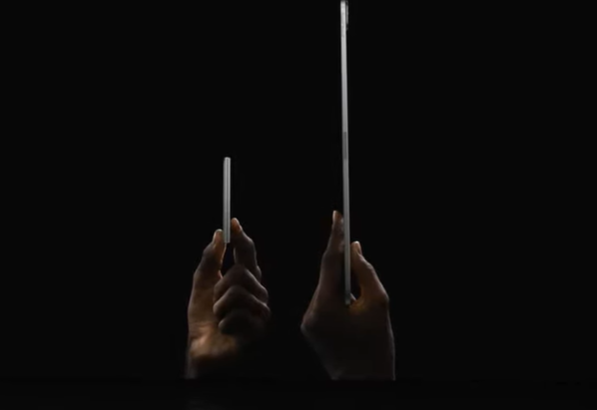iPad Pro: Apple releases powerful new tablet – and its thinnest ever device
New tablet is built for AI – and thinner than the iPad Nano

Your support helps us to tell the story
This election is still a dead heat, according to most polls. In a fight with such wafer-thin margins, we need reporters on the ground talking to the people Trump and Harris are courting. Your support allows us to keep sending journalists to the story.
The Independent is trusted by 27 million Americans from across the entire political spectrum every month. Unlike many other quality news outlets, we choose not to lock you out of our reporting and analysis with paywalls. But quality journalism must still be paid for.
Help us keep bring these critical stories to light. Your support makes all the difference.
Apple has released a new version of the iPad Pro, its thinnest product ever.
The launch marked the “biggest day” of updates for the iPad since it was first launched, the company said.
The new device is smaller and lighter than its predecessor, but comes with a new M4 chip that means it is more powerful than even many of Apple’s Macs.
And it comes with a whole new kind of display, an OLED screen that Apple calls “Ultra Retina XDR”. That will come to the small as well as larger iPad Pro – unlike previously – and Apple will also offer a “nanotextured glass” option that reduces reflections and glare.
Apple said that the power of the new display as well as the tablet’s small size meant that it needed a new chip. That will come in the form of the M4 – despite the fact that Apple only recently updated its Macs to the M3 generation.
The new chip allows for 50 per cent faster CPU performance than the previous iPad Pro, and can provide the same performance using half the energy.
Apple particularly focused on the “neural engine” part of that new chip, which is aimed at AI tasks. While Apple has received some criticism for failing to focus on artificial intelligence despite intense marketing from its competitors, it said that it had actually been leading the market by offering devoted AI hardware in its chips.
It did not announce any new software updates for the iPad’s operating system, including any new artificial intelligence features. Those updates are expected to come next month, when Apple holds its Worldwide Developers Conference and introduces new versions of all its operating systems.
The new iPad Pro comes with double the existing storage of the iPad Pro. It starts at $999 for the smaller, 11-inch version, and $1,299 for the larger 13-inch display.
Apple also announced a new Apple Pencil Pro, which costs $129. That stylus can be rotated, includes a haptic feedback feature so that it can vibrate when it is squeezed, and it now supports Find My for when it is lost.
It also revealed a new keyboard case, which it said had been completely redesigned to be ”thinner and even lighter”. It includes a function row and a new trackpad, and Apple hardware engineering boss John Ternus said that the “entirely experience feels just like using a MacBook”.
Apple chief executive Tim Cook claimed the announcements were part of the biggest day for the iPad since it was first released in 2010.
The new iPad Pro was released alongside an updated version of the iPad Air. Apple also updated video editing app Final Cut Pro as well as music production software Logic Pro.
Analysts noted that the updates come not only after Apple appeared to neglect the iPad line-up, but also as sales seemed to slow in its latest results. It could also represent a step towards the iPad replacing the laptop entirely, they noted.
“The new line-up includes significant improvements that will appeal to a broad range of users, consumers and businesses alike. Importantly, this comes at a time when current iPad owners will be looking for an upgrade,” said Paolo Pescatore, analyst at PP Foresight.
“Whether that be an all-in-one Mac or a more portable touch screen, there’s now a clearer distinction at the high end, presenting choices for those that want a bigger screen and more or less processing power.
“This is a pivotal moment as Apple seeks to give this segment a major boost amidst declining quarterly sales [year-on-year]. It also represents a final step closer to ditching the laptop altogether given the slew of new features and multitasking capabilities.”
Join our commenting forum
Join thought-provoking conversations, follow other Independent readers and see their replies
Comments